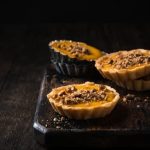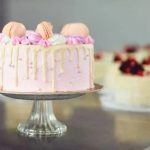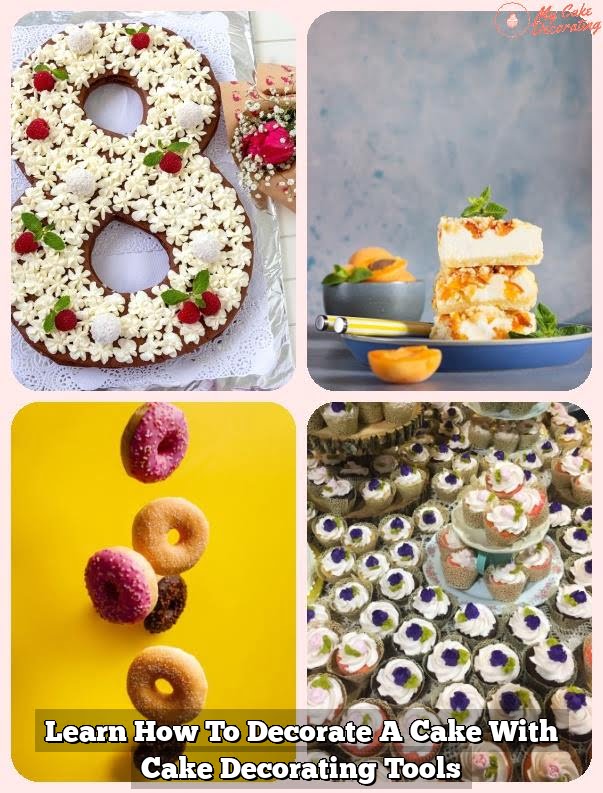Are you looking to create a stunning tiered cake for an upcoming celebration? Whether you’re a beginner or a seasoned baker, knowing how to decorate a tiered cake can be a game-changer.
From choosing the right tools and ingredients to mastering different types of frosting and piping techniques, there are plenty of factors to consider. In this article, we will explore the essential steps and techniques for decorating a tiered cake that will impress your guests and make any occasion memorable.
When it comes to creating a tiered cake, understanding the basics is crucial. It’s not just about stacking layers on top of each other; it’s about creating a visually appealing masterpiece that tastes as good as it looks. From leveling and filling the cake layers to choosing the right frosting and decorations, every step plays a vital role in achieving a professional-looking design.
In the following sections, we will delve into the key aspects of decorating a tiered cake, including tips for preparing the cake layers, mastering different types of frosting, utilizing piping techniques, adding texture and designs, using edible decorations, troubleshooting common issues, and final tips for achieving that perfect finish. Whether you’re decorating your first tiered cake or looking to take your skills to the next level, this comprehensive guide has got you covered.
Choosing the Right Tools and Ingredients for Decorating a Tiered Cake
When it comes to decorating a tiered cake, having the right tools and ingredients is essential. To begin, you will need basic baking equipment such as mixing bowls, measuring cups and spoons, an electric mixer, cake pans, and a cooling rack. Additionally, investing in a good offset spatula, cake turntable, pastry bags, piping tips, and a bench scraper can make the decorating process much easier.
In terms of ingredients, it’s important to use high-quality items for both the cake and the frosting. This includes using fresh eggs, real butter, pure vanilla extract, and high-quality flour and sugar for the cake layers. When it comes to frosting, using unsalted butter, premium cocoa powder or chocolate for ganache, and fresh cream for whipped cream can elevate the taste and texture of your tiered cake.
Another important aspect of choosing the right tools and ingredients is considering any dietary restrictions or allergies that your guests may have. Using alternative flours such as almond or coconut flour for gluten-free options or non-dairy milk substitutes can ensure that everyone can enjoy your beautifully decorated tiered cake.
In addition to these basic tools and ingredients, there are also specialized items that you may want to consider depending on the specific design or theme of your tiered cake. These could include edible gold leaf or edible glitter for a touch of glamour, food coloring gels for vibrant decorations, or specialty fondant molds for intricate designs.
By carefully selecting the proper tools and ingredients based on your design concept and guest preferences, you can set yourself up for successful tiered cake decoration.
| Tools | Ingredients |
|---|---|
| Offset Spatula | Fresh Eggs |
| Cake Turntable | Real Butter |
| Pastry Bags | Pure Vanilla Extract |
| Piping Tips, High-quality Flour, |
Preparing the Cake Layers
When it comes to creating a stunning tiered cake, it’s crucial to ensure that each layer is perfectly level, filled with delicious filling, and stacked securely. To achieve this, start by baking your cake layers as evenly as possible.
Use cake strips or even layers of damp towel around the cake pans to promote even baking and prevent doming. Once your cakes are baked and cooled, carefully level off the tops using a serrated knife or a cake leveler to create a flat surface for stacking.
After leveling your cake layers, it’s time to fill them with your desired flavored frosting or filling. Consider using a piping bag or offset spatula to create an even layer of filling on top of each cake layer. This will not only add flavor but also provide stability when stacking the layers.
When stacking the cake layers, consider using dowels or bubble tea straws for additional support if you’re working with more than two tiers. These will help prevent the upper layers from sinking into the bottom ones and ensure that your tiered cake remains upright and intact throughout the event.
Once your cakes are leveled, filled, and stacked, it’s essential to chill them in the refrigerator before moving on to the next decorating steps. Chilling will help set the fillings and frostings, making it easier to apply a crumb coat and final layer of frosting later on.
Additionally, chilling the cakes will make them easier to handle during the decorating process, reducing the risk of any mishaps while adding those finishing touches that will make your tiered cake truly shine.
Mastering Different Types of Frosting
When it comes to decorating a tiered cake, choosing the right frosting is essential for achieving the desired look and taste. Each type of frosting has its own unique qualities and challenges, so it’s important to understand how to work with buttercream, fondant, and ganache.
- Buttercream: Buttercream is a classic choice for decorating a tiered cake. It is smooth, creamy, and easy to work with. To achieve a perfectly smooth finish, it’s important to properly prepare the buttercream by whipping it until light and fluffy. You can also add food coloring for a pop of color or flavor extracts for added depth.
- Fondant: Fondant is a popular choice for creating a sleek and elegant finish on a tiered cake. It can be rolled out into thin sheets and draped over the cake for a flawless look. However, working with fondant requires some practice to prevent air bubbles and cracking. It’s important to knead the fondant thoroughly before use and roll it out evenly for best results.
- Ganache: Ganache is a rich mixture of chocolate and cream that creates a luxurious finish on a tiered cake. It can be poured over the cake for a smooth glaze or whipped into fluffy peaks for piping decorative accents. When working with ganache, it’s crucial to achieve the right consistency by adjusting the ratio of chocolate to cream based on the desired thickness.
Each type of frosting offers its own unique aesthetic and taste, so you can choose one based on your personal preference or the design of your tiered cake. Additionally, you can even experiment with combining different types of frosting for a multi-dimensional effect that will impress your guests. With some practice and patience, you can master these different types of frosting to create stunning designs on your tiered cakes.
Step-by-Step Guide to Piping Techniques for Tiered Cake Decoration
Piping Bags and Tips
To start decorating a tiered cake, you will need piping bags and tips. Piping bags come in different materials such as disposable plastic or reusable fabric, while piping tips come in various sizes and shapes. It’s important to choose the right combination of bag and tip for the desired effect you want to achieve.
Buttercream Piping
One popular piping technique for decorating tiered cakes is using buttercream frosting. With a piping bag filled with buttercream frosting and a star-shaped tip, you can create beautiful rosettes, swirls, and borders on your cake layers. Practice proper pressure control to achieve consistent results.
Fondant Piping
If you prefer using fondant for decorating your tiered cake, you can also use it for piping designs. Roll out the fondant into thin strips and use a small round tip to create delicate borders or intricate lace-like patterns on your cake tiers.
Royal Icing Piping
For more intricate designs or detailed decorations, royal icing is an ideal choice. It dries hard which makes it perfect for creating 3D shapes, delicate filigree work, or even writing messages on your tiered cake layers. Use a parchment paper cone or a small round tip to pipe the royal icing onto your cake.
By mastering these piping techniques, you can elevate the appearance of your tiered cake and impress your guests with professional-looking decorations. With practice and patience, you’ll be able to create stunning designs using different types of frosting and piping tips.
Creative Ways to Add Texture and Designs to Your Tiered Cake
When it comes to decorating a tiered cake, there are endless creative ways to add texture and designs that will make your creation stand out. Whether you’re a beginner or a more experienced baker, exploring different techniques can elevate the look of your tiered cake and make it truly special. Here are some creative ideas for adding texture and designs to your tiered cake:
- Using edible stencils: Edible stencils are a fun and easy way to add intricate designs to the surface of your cake. Simply place the stencil on the cake and dust with powdered sugar or cocoa for a beautiful, professional-looking pattern.
- Embossing with textured mats: Textured mats or impression mats can be used to imprint decorative patterns onto fondant or buttercream. This technique adds depth and visual interest to your tiered cake without requiring advanced piping skills.
- Applying edible lace: Edible lace can take your tiered cake to the next level by adding a delicate, intricate touch. It can be applied directly to fondant-covered cakes for a romantic and elegant look.
These creative techniques allow you to personalize your tiered cake and showcase your unique style. Experimenting with different textures and designs will help you create a show-stopping centerpiece for any special occasion.
Remember, practice makes perfect when it comes to decorating cakes, so don’t be afraid to try new things and have fun with the process. With these creative ideas, you’ll be well on your way to creating a beautifully decorated tiered cake that will impress your friends and family.
Using Edible Decorations
When it comes to decorating a tiered cake, using edible decorations can be a fun and beautiful way to add a unique touch to your creation. From delicate flowers to vibrant fruits and decadent chocolates, the options for edible decorations are endless. It’s important to select decorations that not only look visually appealing but also complement the flavors of your cake.
Choosing Edible Decorations
When choosing edible decorations for your tiered cake, consider the flavor profile of the cake itself. For example, if you have a lemon-flavored cake, consider using fresh berries as decoration. If your cake is chocolate-based, consider using chocolate curls or shavings as a topping. It’s also important to consider the overall theme or occasion when selecting edible decorations. For a wedding cake, delicate edible flowers such as roses or peonies can create an elegant and romantic look.
Arranging Edible Decorations
Once you’ve selected your edible decorations, it’s essential to strategically arrange them on the tiered cake. Consider the size and shape of the decorations as well as where they will be placed on each tier.
For example, larger fruits such as strawberries or kiwi can be arranged around the bottom tier, while smaller berries can be scattered across all tiers for a cohesive look. When using edible flowers, carefully place them in clusters or cascading down the sides of the tiers for a stunning visual impact.
Using Chocolates as Decorations
Chocolates can be used in various ways to decorate a tiered cake. From drizzling melted chocolate over the top tier to creating intricate designs with tempered chocolate pieces, there are countless ways to incorporate chocolate into your cake decoration. Consider using different types of chocolates such as white, milk, and dark chocolate to add depth and contrast to your design. Additionally, consider incorporating other chocolate confections such as truffles or chocolate-covered nuts for added texture and flavor.
By carefully selecting and arranging edible decorations on your tiered cake, you can elevate its visual appeal while adding complementary flavors and textures to each slice. Whether it’s colorful fruits, delicate flowers, or decadent chocolates, edible decorations are sure to make your tiered cake stand out at any special occasion or celebration.
Troubleshooting Common Decorating Issues
Cracks, bulges, and uneven frosting can be common issues when decorating a tiered cake. However, with the right techniques and tips, these problems can easily be resolved to achieve a professional-looking finish. Cracks on the surface of the cake can occur for various reasons such as overmixing the batter, uneven baking, or even improper stacking of cake layers.
To prevent cracks, make sure to properly prepare the cake layers by leveling them before stacking and filling. Additionally, allowing the cakes to cool completely before decorating can also help prevent cracking.
Bulges in between cake layers are often caused by too much filling or frosting between the layers. To avoid this, make sure to use an appropriate amount of filling and evenly distribute it across each layer. Another technique to prevent bulges is to apply a crumb coat before adding the final layer of frosting. A crumb coat is a thin layer of frosting that locks in any loose crumbs and creates a smooth base for the final coat of frosting.
When it comes to smoothing techniques, there are various methods that can be used depending on the type of frosting being used. For buttercream frostings, using a bench scraper or offset spatula dipped in hot water can help achieve a smooth finish.
On the other hand, fondant-covered cakes can benefit from using a fondant smoother tool to eliminate any wrinkles or air bubbles. Overall, troubleshooting common decorating issues requires attention to detail and patience in order to achieve a flawless tiered cake design.
| Common Decorating Issue | Troubleshooting Technique |
|---|---|
| Cracks on surface | Properly preparing cake layers by leveling before stacking and filling. |
| Bulges between layers | Using an appropriate amount of filling and applying a crumb coat before final frosting. |
| Smoothing techniques | Using tools like bench scraper, offset spatula dipped in hot water for buttercream; fondant smoother tool for fondant-covered cakes. |
Final Tips and Tricks for a Professional-Looking Tiered Cake Design
In conclusion, decorating a tiered cake requires not only the right tools and ingredients, but also a good understanding of the basic techniques and methods involved. By mastering the art of leveling, filling, stacking, and frosting cake layers, as well as learning various piping techniques and creative ways to add texture and designs, you can achieve a professional-looking tiered cake design.
In addition to these fundamental skills, it’s important to pay attention to troubleshooting common decorating issues such as cracks, bulges, and achieving smooth finishes. By being prepared to address these challenges, you can ensure that your tiered cake turns out exactly as you envision it.
Lastly, don’t be afraid to experiment with edible decorations such as flowers, fruits, and chocolates to add a touch of elegance and unique flair to your tiered cake. With patience, practice, and attention to detail, you can create stunning tiered cakes that will impress any audience. So go ahead and let your creativity shine as you take on the rewarding task of decorating a tiered cake.
Frequently Asked Questions
Do You Put Cake Boards Between Tiers?
Yes, cake boards are typically used between tiers of a cake to provide support and stability. The cake boards also make it easier to move and transport the cake without damaging the layers.
How Do You Stack a Two Tier Cake for Beginners?
To stack a two-tier cake for beginners, it’s important to start by assembling each tier separately on its own cake board. Then, carefully insert dowels into the bottom tier to support the weight of the top tier.
Once the dowels are in place, gently lower the top tier onto the bottom tier, making sure it’s centered and level.
How Do You Put Top Tier on a Cake?
Putting the top tier on a cake involves careful placement and alignment. After securing each tier with dowels for support, gently lift the top tier using a spatula or your hands, being mindful not to damage the frosting or decorations.
Lower it onto the doweled bottom tier, making sure it sits evenly and securely without any leaning or tilting. This step requires patience and precision to achieve a professional-looking finish.

Welcome to my blog about home and family. This blog is a place where I will share my thoughts, ideas, and experiences related to these important topics. I am a stay-at-home mom with two young children. I hope you enjoy reading it! and may find some helpful tips and ideas that will make your home and family life even better!





